Are tape charts outdated? How the Vernier app (Vernier Video Physics) is revolutionizing physics classes!
I’m Ken Kuwako, a science trainer, and for me, every day is an experiment.
When teaching “the motion of objects” in science class, do you ever struggle with how to help students truly grasp the concepts? The classic ticker-tape timer experiment is a staple, but it’s easy for students to get lost and wonder, “What’s the point of all this?”
I’d like to recommend using video analysis with an app called Vernier Video Physics. This app lets you go beyond what textbooks and traditional teaching materials can offer, giving students a fun and intuitive way to understand the fascinating and complex world of motion.
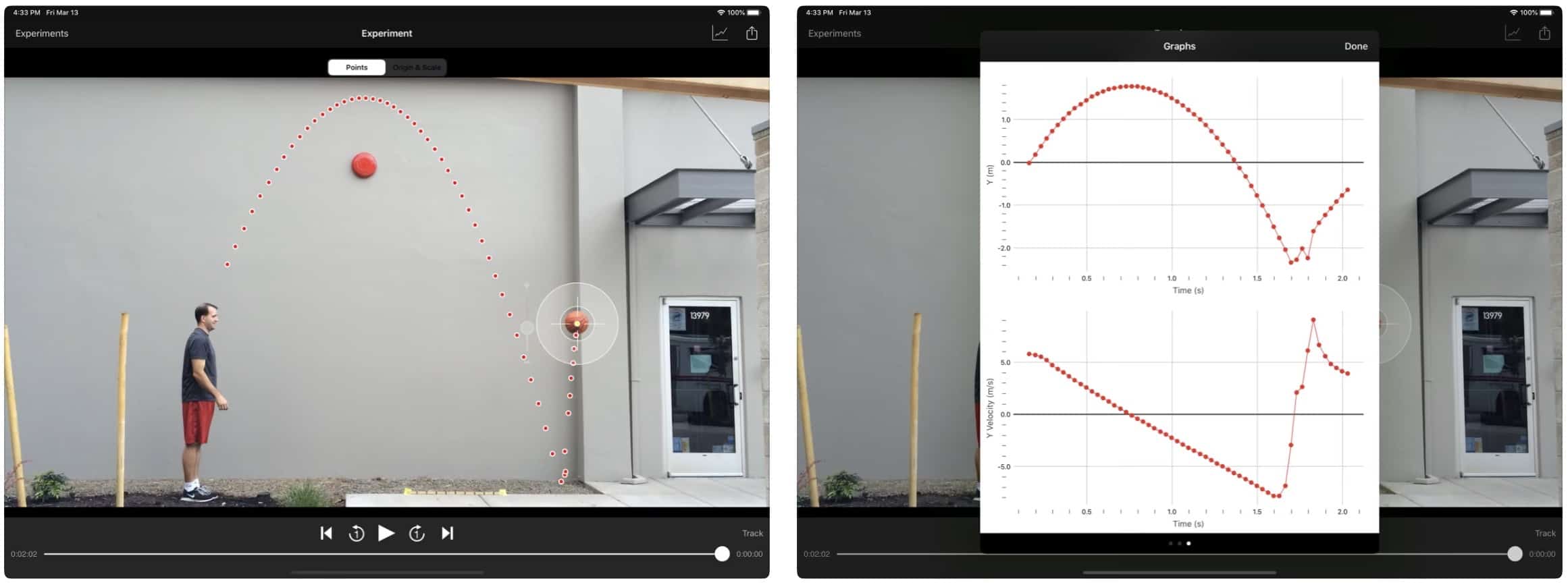
Why is this app so great? Its biggest appeal is that it analyzes videos you record on your smartphone and automatically tracks the movement of an object. It also instantly generates graphs that show how the object’s position (x-t) and velocity (v-t) change over time.
This is essentially a digital and more advanced version of the classic ticker-tape timer experiment. By visualizing the motion with this app before a traditional experiment, students can get a clear picture of “what we’re doing” and “what we’re trying to find out.” Watching the trajectory and the shape of the graphs appear in real-time will help spark those “why?” and “ah-ha!” moments in your students.
You can use it as a dynamic introduction to a lesson to show them how cool this is, or have students record and analyze the motion of everyday objects themselves as part of a hands-on project. This one app can make your science class more fun and engaging.
A Practical Guide to Using Vernier Video Physics in Your Classroom
What You’ll Need
- A smartphone or tablet with the Vernier Video Physics app installed
- An object to film (a ball, weight, toy car, etc.)
- A simple, uncluttered background (a plain, solid-colored wall is best)
- A ruler or measuring tape (to set a scale for distance)
I’ve prepared some video clips for you. Start by downloading them here.
Here’s a video of me doing the experiment.
It’s incredibly easy to use. Just film your video and then set the object you want to track. In this case, I put a tennis ball on a dynamics cart.
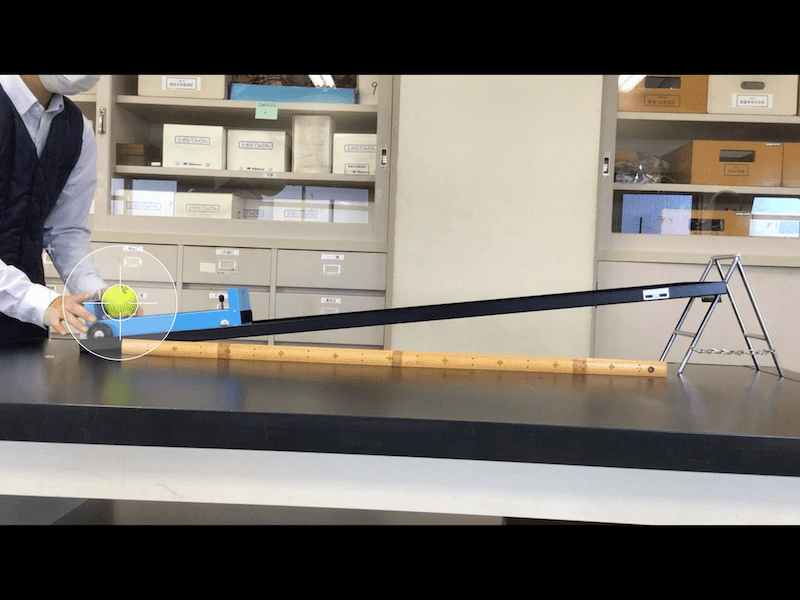
Then, press the “Track” button, and it will follow your target—the tennis ball in this case. Sometimes it might lose the object, so in that case, you can manually track it by advancing the frames one by one.
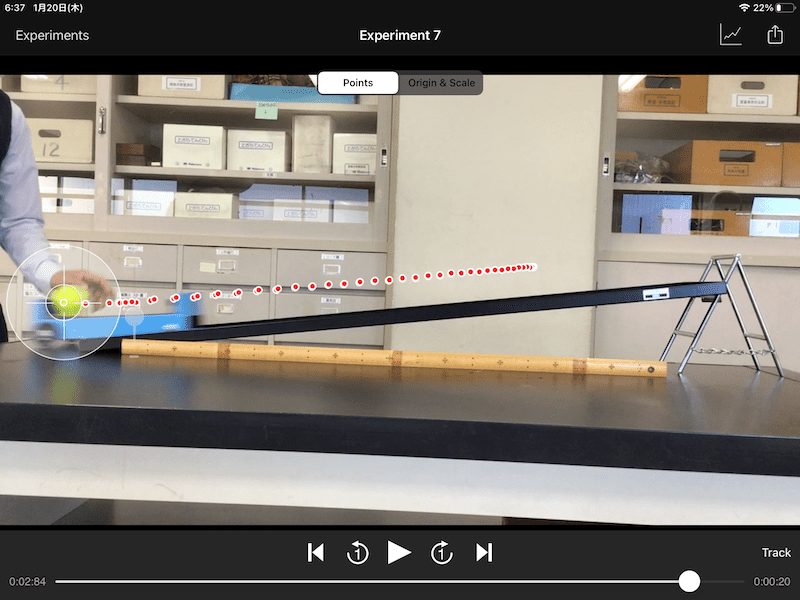
Next, you set the position and direction of the x and y axes. If you also set a scale, it can create a precise x-t graph, so it’s a good idea to include a ruler in your video.
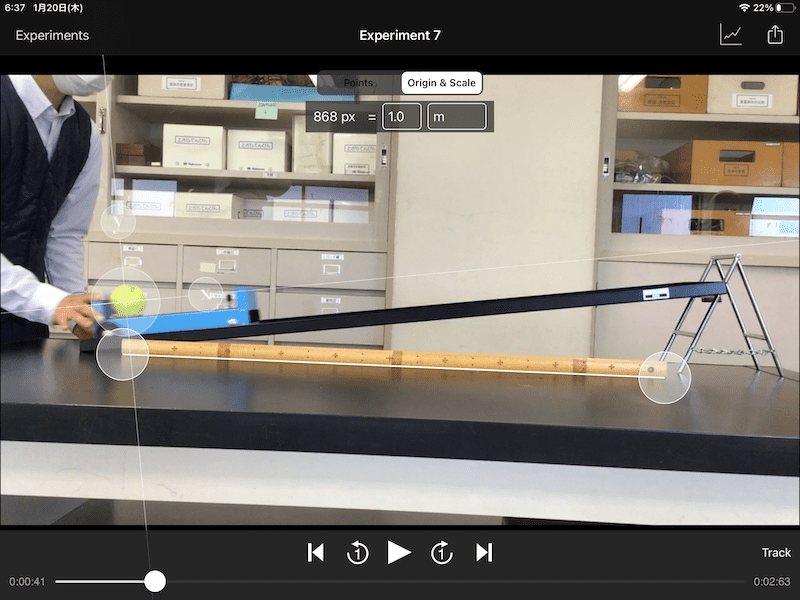
The app will analyze it right away. A negative constant acceleration can be tricky to visualize, but with this, maybe they’ll finally get it?

Here’s what a free-fall experiment looks like.

If you visually calculate the acceleration from the v-t graph, you get:
2.2/(0.60-0.36)=9.2 [m/s^2]
Here’s a vertical throw.
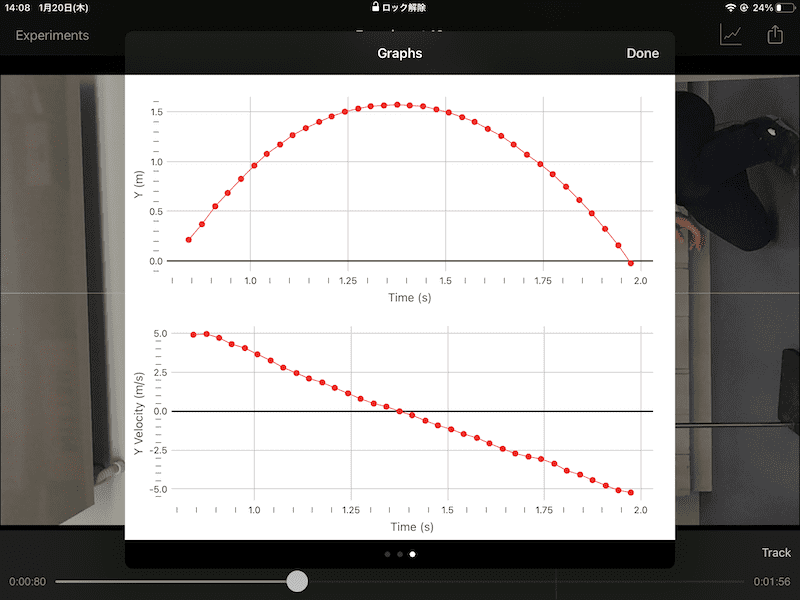
When you find the acceleration from the slope, it’s about 10 m/s^2. That’s pretty good, since even with ticker tape, you often get values below 9. And here’s an example of two-dimensional falling motion.
How did you like that? When you analyze it…
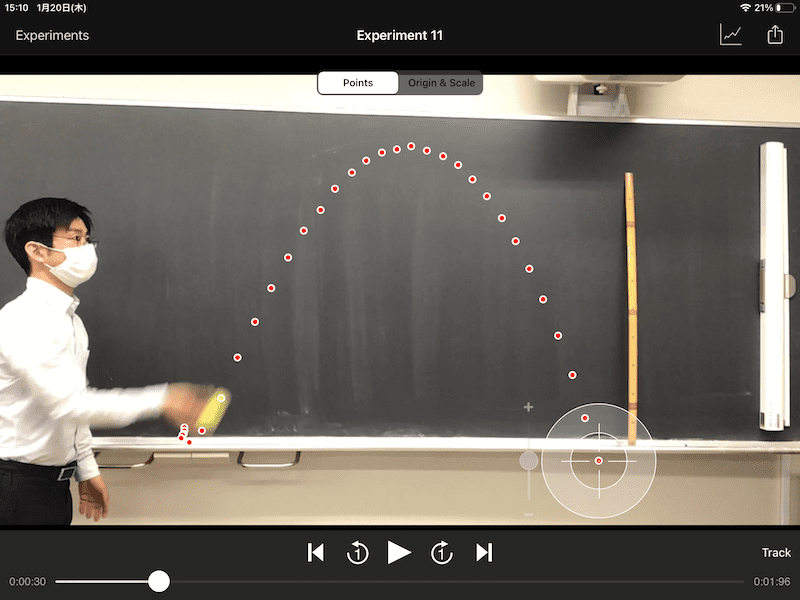
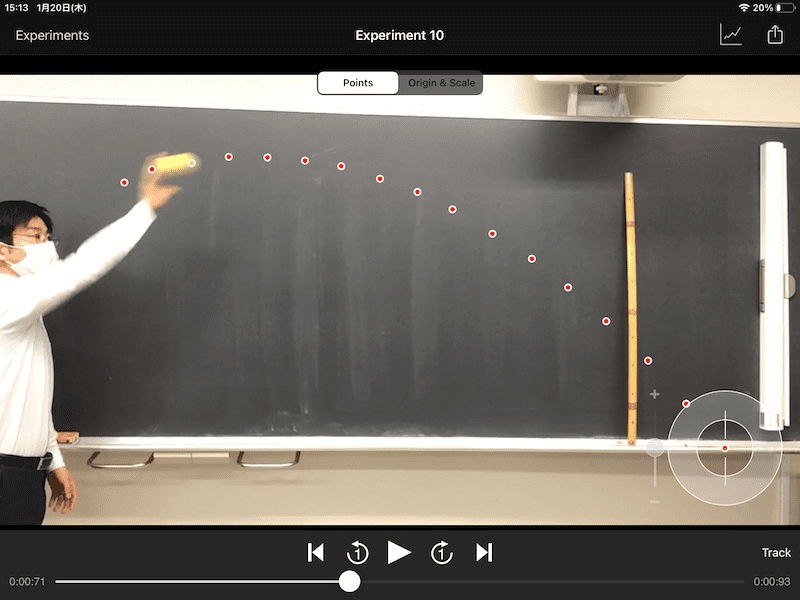
And I tried out a few other things as well.
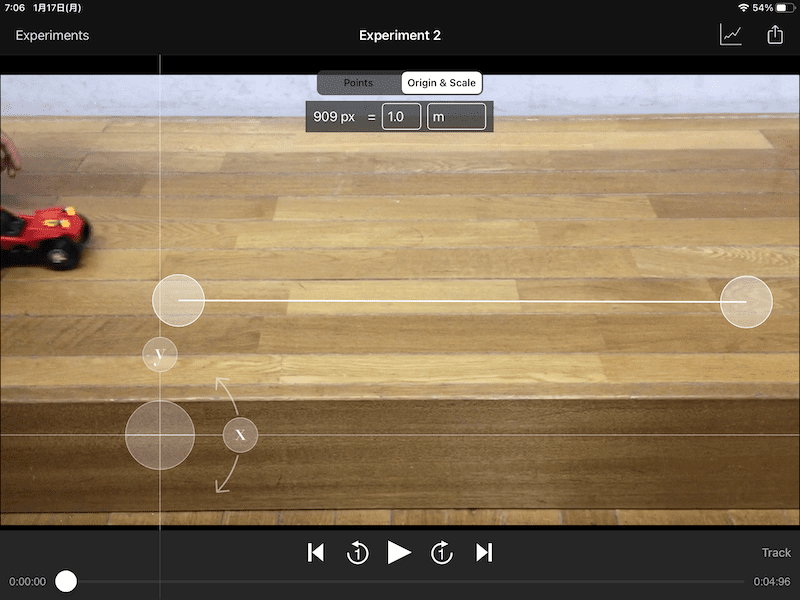
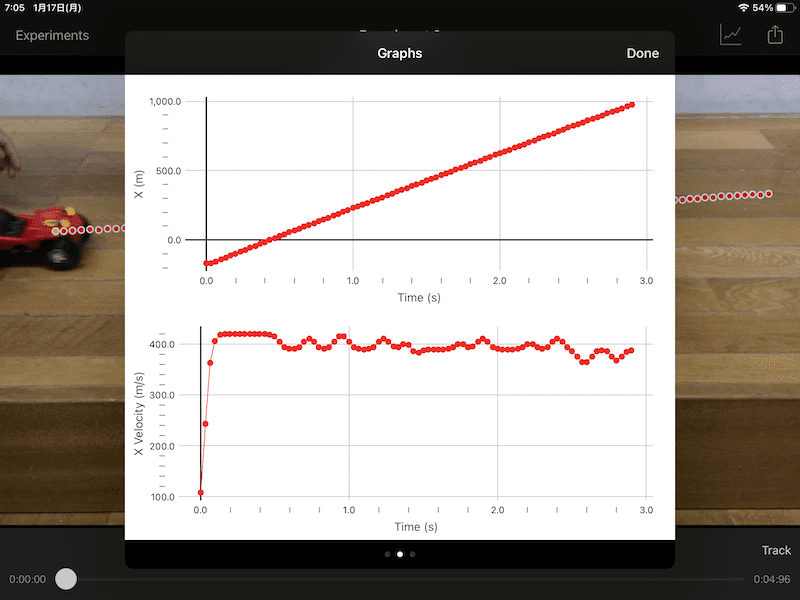
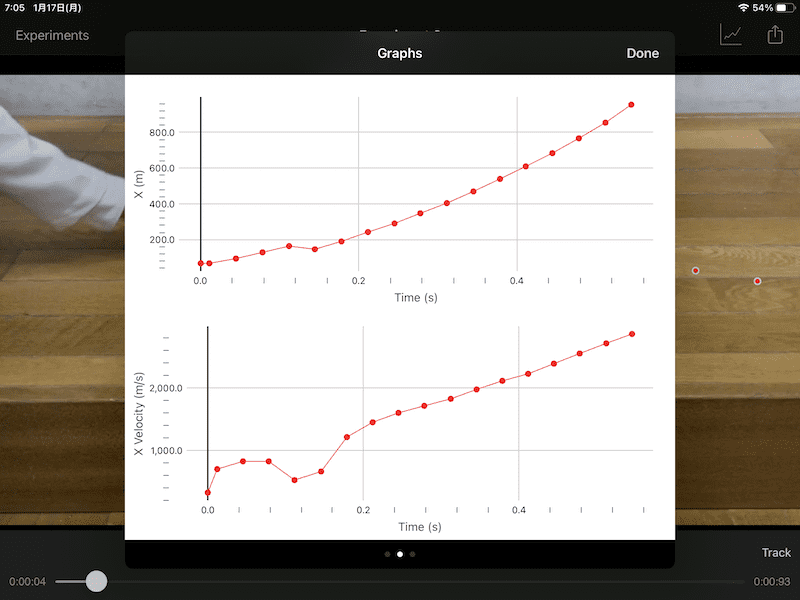
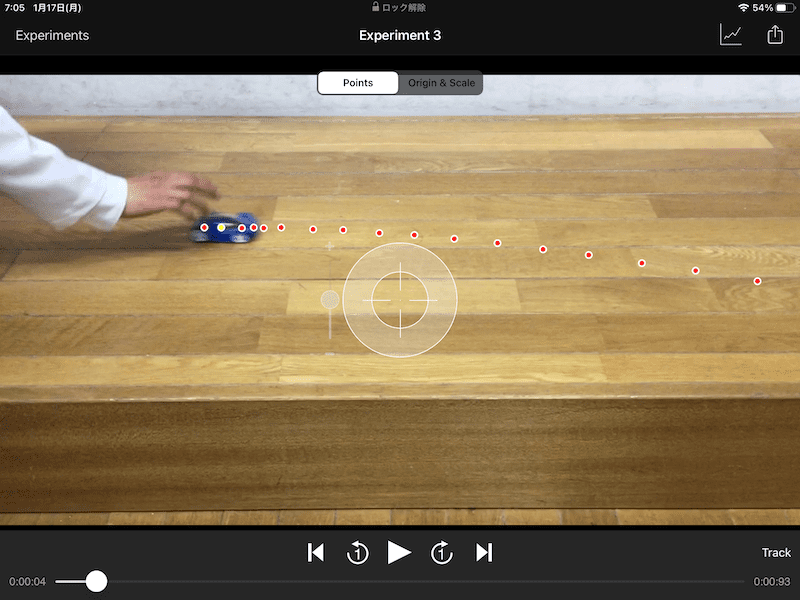
With this app, setup and cleanup are a breeze. More importantly, it will spark your students’ intellectual curiosity and make them want to learn more! I hope you’ll try using it to bring a fresh perspective to your classroom.
I also used a strobe photography app to film the motion of objects. You can see the results here. You could have students use these photos to draw x and y axes and analyze the motion, which might be a fun activity.
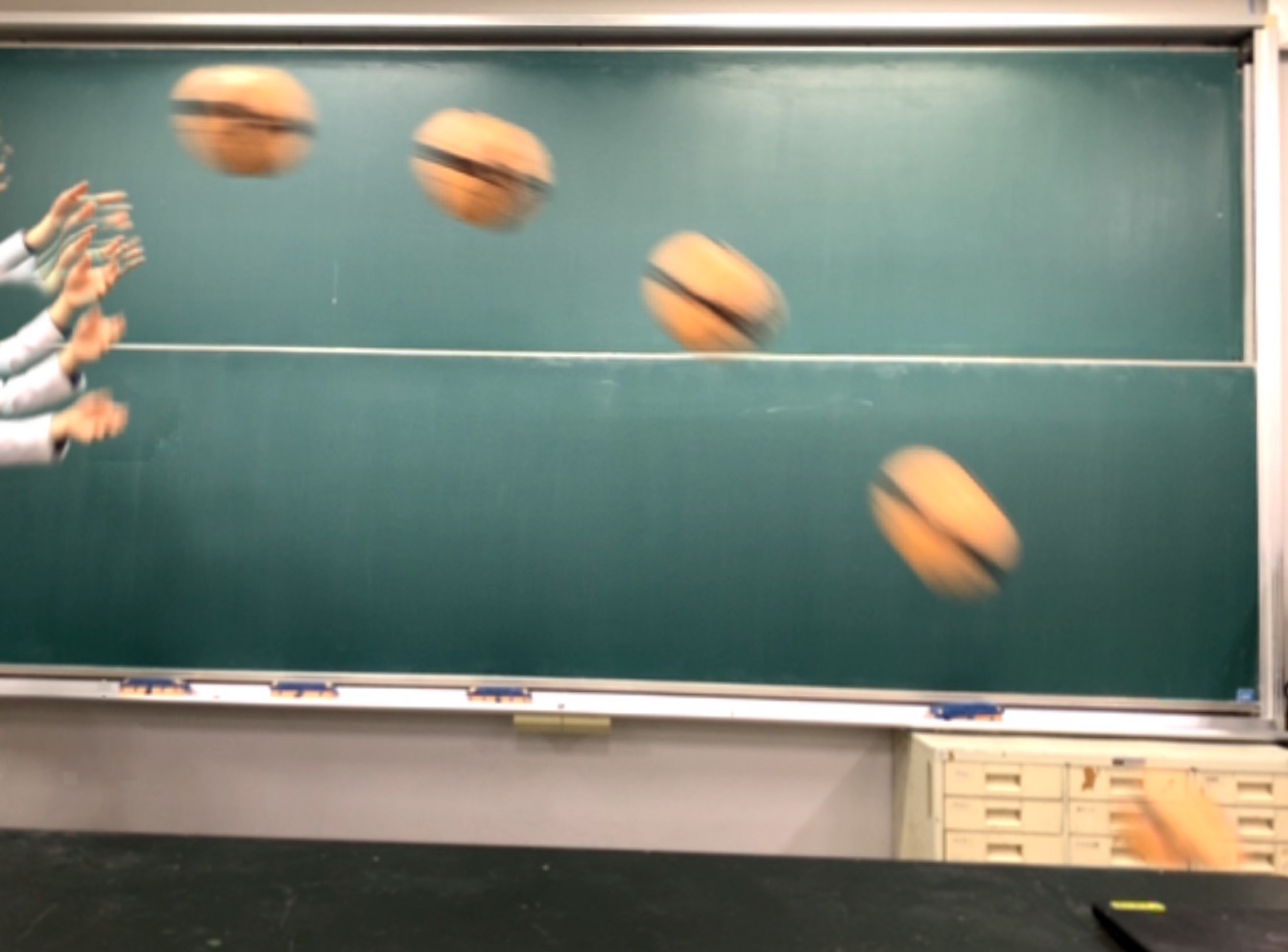
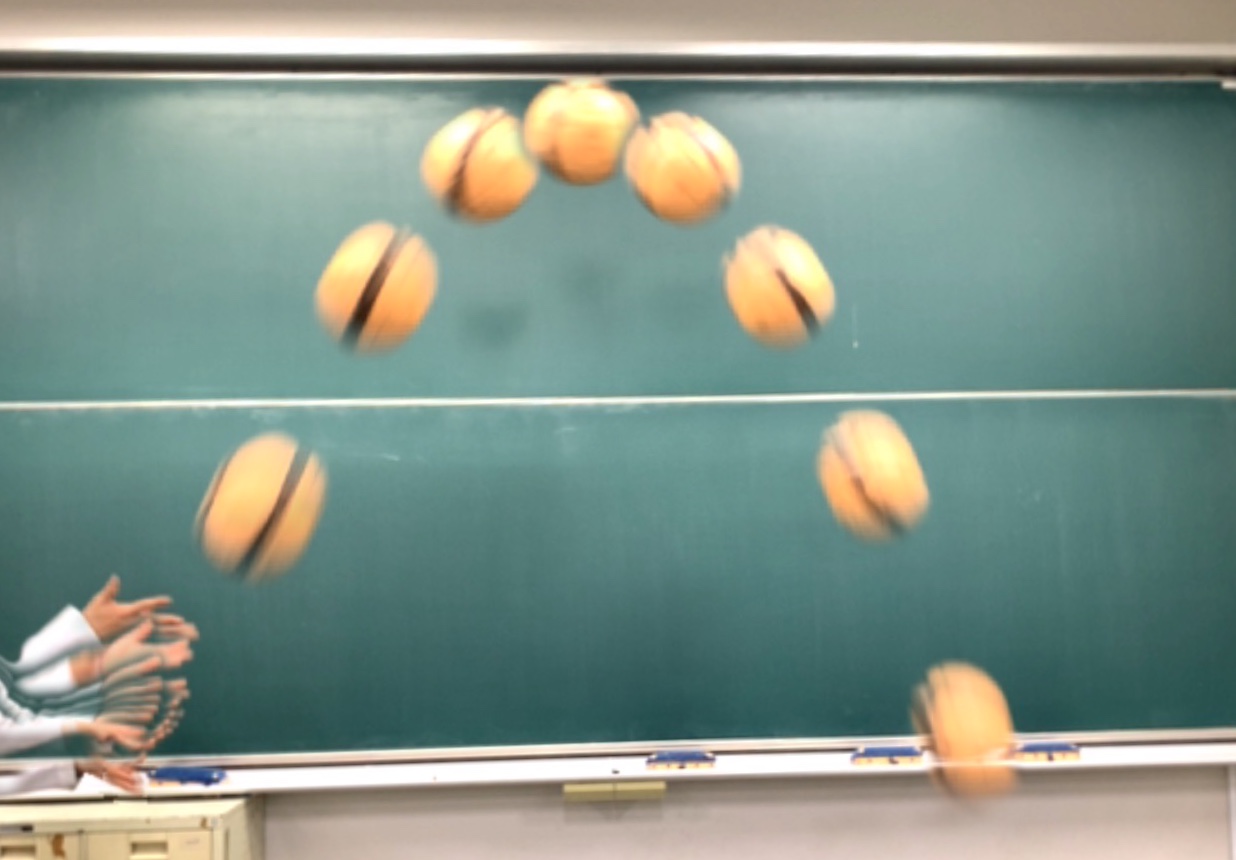
I hope you’ll find these useful in your class!
Inquiries & Requests
We want to make the wonders of science more accessible! We’ve put together fun science experiments you can do at home, along with easy-to-understand tips. Feel free to explore our articles!
・About the author, Ken Kuwako: Click here
・For business inquiries (writing, lectures, science workshops, TV supervision, appearances, etc.): Click here
・Get updates on new articles on X!
![]() We post experiment videos on the Kagaku no Neta Channel!
We post experiment videos on the Kagaku no Neta Channel!


